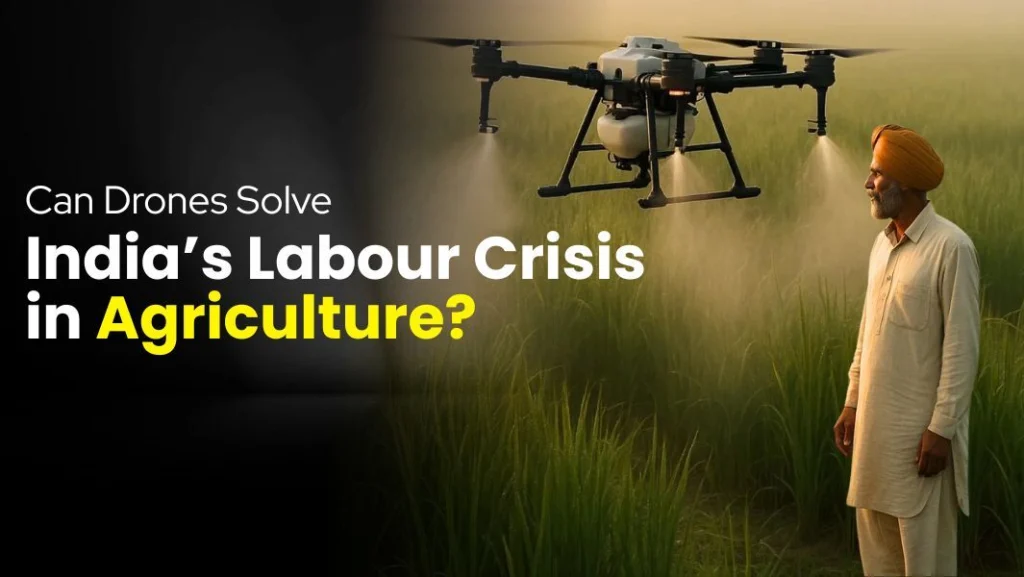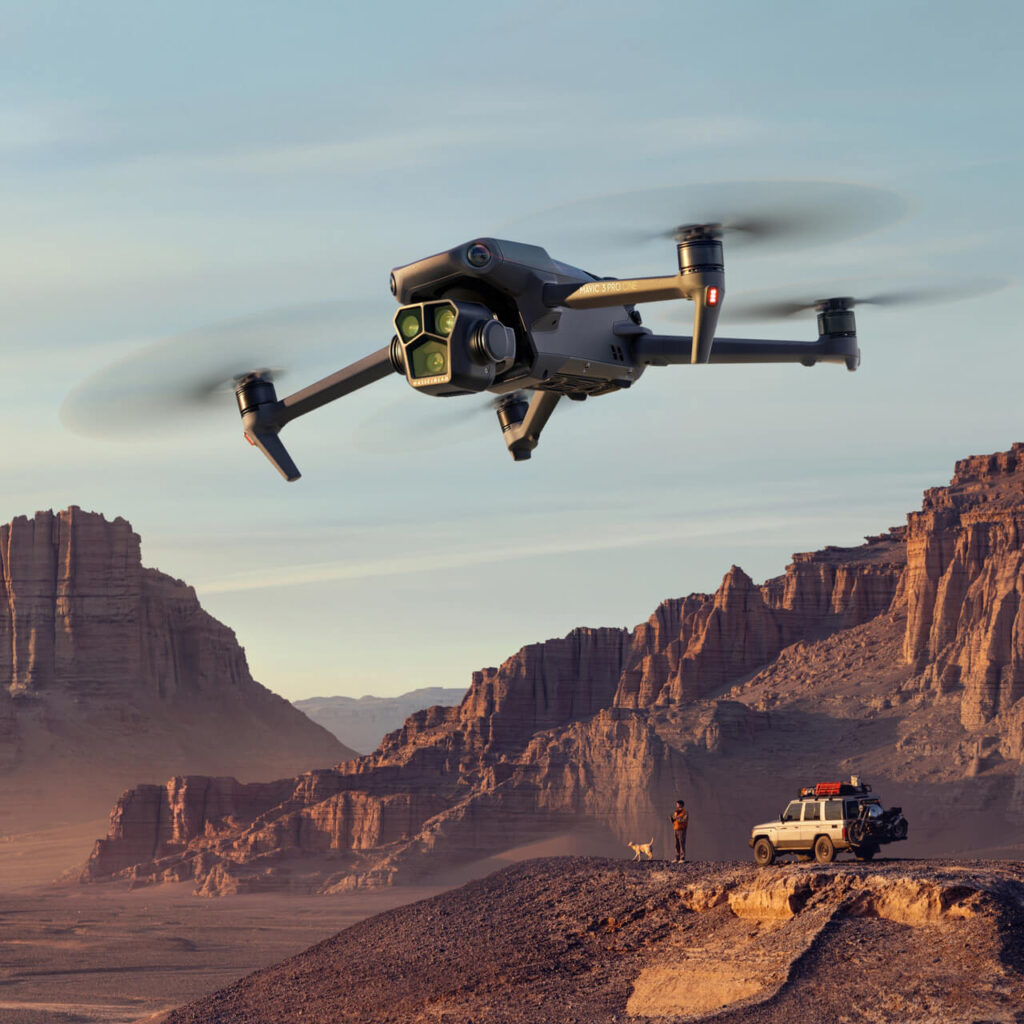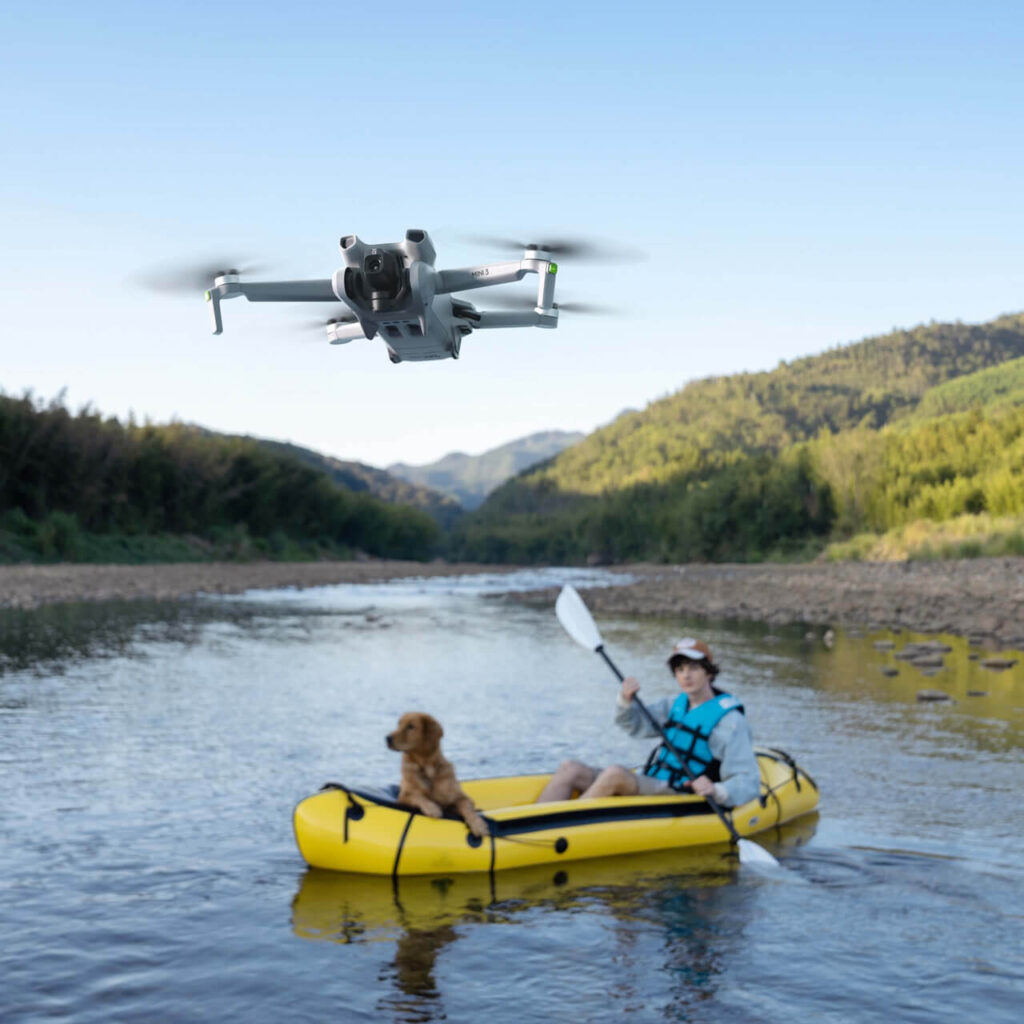India’s agricultural sector, which employs nearly 50% of the country’s workforce and contributes approximately 18% to its GDP, faces an unprecedented labor crisis. With rural-urban migration accelerating and younger generations moving away from traditional farming, the sector confronts a critical shortage of agricultural workers. Enter agricultural drones – unmanned aerial vehicles that promise to revolutionize farming practices and potentially address the growing labor scarcity. But can these flying machines truly solve India’s agricultural workforce challenges?
The Scale of India’s Agricultural Labor Crisis
India’s farming sector is experiencing a massive demographic shift. The limited mechanization which necessitates the reliance on manual labour always affects agriculture, creating a dependency that’s becoming increasingly unsustainable. Traditional farming practices require intensive manual labor for activities like crop monitoring, pesticide spraying, fertilizer application, and harvesting.
The crisis manifests in several ways:
- Seasonal labor shortages during critical farming periods
- Rising wage costs due to reduced workforce availability
- Inefficient farming practices leading to reduced productivity
- Increased dependency on aging rural populations
- Migration of younger workers to urban areas seeking better opportunities
This labor shortage has created an urgent need for technological solutions that can maintain agricultural productivity while reducing dependence on manual labor.
The Drone Revolution in Indian Agriculture
Agricultural drones are emerging as a transformative solution to India’s farming challenges. The India agriculture drones market size reached USD 243.60 Million in 2024. Looking forward, IMARC Group expects the market to reach USD 2,110.60 Million by 2033, exhibiting a growth rate (CAGR) of 24.10% during 2025-2033.
The Indian government has recognized this potential and is actively promoting drone adoption. The Indian government has allocated ₹500 crore (approximately $57 million) to support this initiative, aiming to provide drones to 15,000 SHGs from 2024-25 to 2025-26.
Key Applications of Drones in Indian Agriculture
Precision Spraying and Fertilization Drones can evenly spray pesticides and fertilizers over fields, reducing chemical usage by 30-40%, according to the Indian Council of Agricultural Research (ICAR). This technology eliminates the need for manual spraying, which traditionally required multiple workers and posed health risks.
Crop Monitoring and Surveillance Drones equipped with multispectral cameras can monitor crop health, detect diseases early, and assess irrigation needs across vast areas in minutes rather than days of manual inspection.
Seeding and Planting Drones can help in planting trees and crops, which was done by farmers before. This technology will not only save labor but also help in saving fuels.
Spotlight: DJI Mavic 3 Multispectral – Leading Agricultural Drone
The DJI Mavic 3 Multispectral represents the pinnacle of agricultural drone technology available in 2025. This drone combines advanced imaging capabilities with user-friendly operation, making it accessible to farmers with varying levels of technical expertise.
Key Features of DJI Mavic 3 Multispectral
| Feature | Specification |
|---|---|
| Flight Time | Up to 43 minutes |
| Imaging System | RGB + 4x Multispectral cameras |
| Transmission Range | Up to 15 km |
| Operating Temperature | -10°C to 40°C |
| Wind Resistance | Up to 12 m/s |
| Positioning | RTK for centimeter-level accuracy |
| Data Processing | Real-time NDVI mapping |
| Weight | 951g |
The drone’s multispectral imaging system captures data across different light spectrums, enabling farmers to:
- Assess crop health and stress levels
- Monitor vegetation indices like NDVI
- Detect irrigation issues
- Identify pest and disease outbreaks early
- Optimize fertilizer application
For most farms seeking an affordable, user-friendly system, the DJI Mavic 3 Multispectral remains a top choice in 2025.
Drone Brand Comparison: DJI vs Competitors
While DJI dominates the global agricultural drone market, several competitors offer viable alternatives for Indian farmers. Here’s a comprehensive comparison:
| Brand | Model | Price Range (₹) | Flight Time | Payload Capacity | Key Advantage |
|---|---|---|---|---|---|
| DJI | Mavic 3 Multispectral | 4,50,000 – 5,00,000 | 43 minutes | N/A (Imaging) | Superior imaging & software ecosystem |
| DJI | Agras T40 | 12,00,000 – 15,00,000 | 25 minutes | 40L spray tank | High-capacity spraying |
| XAG | P100 Pro | 8,00,000 – 10,00,000 | 18 minutes | 50L spray tank | Cost-effective spraying solution |
| Skydio | X10 | 25,00,000+ | 35 minutes | Custom payloads | Advanced AI navigation |
| Indian Brands | Various models | 2,00,000 – 6,00,000 | 15-30 minutes | 5-20L | Government support & local service |
Detailed Brand Analysis
DJI Agriculture Ecosystem Nearly 400,000 DJI agricultural drones were used at the end of 2024, a 90% increase from its first study in 2020. DJI’s dominance stems from:
- Comprehensive software solutions
- Reliable hardware with proven track record
- Extensive dealer network and support
- Continuous innovation and updates
XAG (Alternative Choice) Chinese manufacturer XAG offers competitive spraying drones with:
- Lower acquisition costs compared to DJI
- Robust build quality for harsh field conditions
- Good payload capacity for medium-sized farms
Indian Manufacturers Local brands like ideaForge, Garuda Aerospace, and others provide:
- Government subsidies and support
- Local manufacturing benefits
- Customized solutions for Indian farming conditions
- Lower import duties and easier servicing
Economic Impact and ROI Analysis
The economic benefits of drone adoption in Indian agriculture are substantial:
Cost-Benefit Analysis for Medium Farm (50 acres)
| Traditional Method | Drone Technology |
|---|---|
| Pesticide Spraying | |
| Labor cost: ₹15,000/season | Drone operation: ₹3,000/season |
| Time required: 5 days | Time required: 4 hours |
| Chemical usage: 100% | Chemical usage: 60-70% |
| Crop Monitoring | |
| Labor cost: ₹8,000/month | Drone surveys: ₹1,500/month |
| Coverage: 20% of field daily | Coverage: 100% of field in 2 hours |
| Detection accuracy: 40-60% | Detection accuracy: 80-95% |
Annual Savings Potential: ₹1,20,000 – ₹1,80,000 per 50-acre farm Payback Period: 2-3 years for drone investment
Challenges and Limitations
Despite the promising potential, several challenges limit widespread drone adoption:
Technical Challenges
- Limited battery life requiring frequent charging
- Weather dependency affecting operations
- Need for skilled operators and maintenance
- High initial investment costs for small farmers
Regulatory Hurdles
- Complex licensing requirements for commercial operations
- Airspace restrictions near airports and sensitive areas
- Insurance and liability concerns
- Data privacy and security regulations
Infrastructure Limitations
- Poor rural internet connectivity affecting data transmission
- Limited charging infrastructure in remote areas
- Lack of trained technicians for maintenance and repairs
Government Initiatives and Support
The Indian government has launched several initiatives to promote drone adoption in agriculture:
The scheme, spanning from 2024-25 to 2025-26, has a budget of Rs. 1,261 crore. The Centre will offer 80% assistance, capped at Rs. 8 lakh per SHG, to cover the drones’ costs and accessories.
Key Government Programs
| Program | Budget | Beneficiaries | Duration |
|---|---|---|---|
| Drone Didi Scheme | ₹1,261 crore | 15,000 SHGs | 2024-26 |
| PM-KISAN Drone Scheme | ₹500 crore | Rural women groups | 2024-25 |
| Kisan Drone Yojana | ₹100 crore | Individual farmers | Ongoing |
Success Stories and Case Studies
Case Study 1: Precision Agriculture in Punjab
A 200-acre wheat farm in Punjab implemented DJI Agras T30 drones for pesticide spraying and crop monitoring. Results after one season:
- 35% reduction in pesticide usage
- 60% reduction in labor costs for spraying operations
- 25% increase in yield due to timely intervention
- ROI achieved within 18 months
Case Study 2: Maharashtra Cotton Farms
Cotton farmers in Vidarbha region adopted drone technology for bollworm detection and targeted spraying:
- Early pest detection improved by 80%
- Pesticide application reduced by 40%
- Labor requirement decreased by 70%
- Overall profitability increased by 30%
Future Outlook and Technological Advancements
The future of agricultural drones in India looks promising with several technological developments on the horizon:
Emerging Technologies
- AI-Powered Analytics: Advanced machine learning algorithms for crop health assessment
- Autonomous Operations: Fully automated flight paths and decision-making systems
- Swarm Technology: Multiple drones working in coordination for large-scale operations
- 5G Connectivity: Real-time data transmission and remote monitoring capabilities
Market Projections
According to an American consulting firm, agricultural drone usage in India will grow at 38.5 per cent CAGR and reach a value of $121.43 million by 2030. The adoption rate of drones will form 2 per cent of the total agricultural technology market.
Addressing Labor Displacement Concerns
While drones offer solutions to labor shortages, they also raise concerns about displacing existing agricultural workers. However, the reality is more nuanced:
Job Transformation Rather Than Elimination
- Creation of new roles: drone operators, data analysts, maintenance technicians
- Upskilling opportunities for existing farm workers
- Higher-value job creation in rural areas
- Reduced physical burden on agricultural workers
Training and Skill Development Programs
The government and private companies are launching training programs to:
- Train farmers and rural youth in drone operations
- Develop maintenance and repair skills
- Create entrepreneur opportunities in drone services
- Build local capacity for technology adoption
Recommendations for Successful Implementation
For drones to effectively address India’s agricultural labor crisis, several strategic actions are needed:
For Farmers
- Start with rental or service models before purchasing
- Focus on high-impact applications like spraying and monitoring
- Invest in training and skill development
- Form farmer producer organizations for shared resources
For Government
- Simplify regulatory framework for agricultural drone operations
- Increase subsidies for small and marginal farmers
- Develop rural infrastructure supporting drone operations
- Create standardized training and certification programs
For Industry
- Develop cost-effective solutions for small farmers
- Establish robust service and maintenance networks
- Focus on user-friendly interfaces and operations
- Invest in local manufacturing and assembly
Conclusion
Drones represent a transformative technology that can significantly address India’s agricultural labor crisis, but they are not a complete solution. The technology excels in replacing labor-intensive tasks like spraying, monitoring, and data collection, while creating new opportunities for skilled employment.
With the Indian government’s strong support through schemes like Drone Didi and substantial market growth projections, the adoption of agricultural drones is accelerating. The DJI Mavic 3 Multispectral and similar advanced drones offer farmers powerful tools to increase efficiency and reduce dependency on manual labor.
However, success depends on addressing key challenges including high initial costs, training requirements, and infrastructure limitations. The future lies not in replacing agricultural workers entirely, but in transforming their roles and creating a more efficient, technology-enabled farming ecosystem.
As drones continue to evolve with AI integration, autonomous operations, and improved affordability, they will play an increasingly crucial role in ensuring food security while addressing labor shortages. The question is no longer whether drones can solve India’s agricultural labor crisis, but how quickly and effectively they can be integrated into the farming ecosystem to create sustainable solutions for all stakeholders.
Most of these agriculture drones are listed on www.jetayugadgets.com — so if you’re ready to bring the future of farming to your field, have a look and find the one that fits your land.




